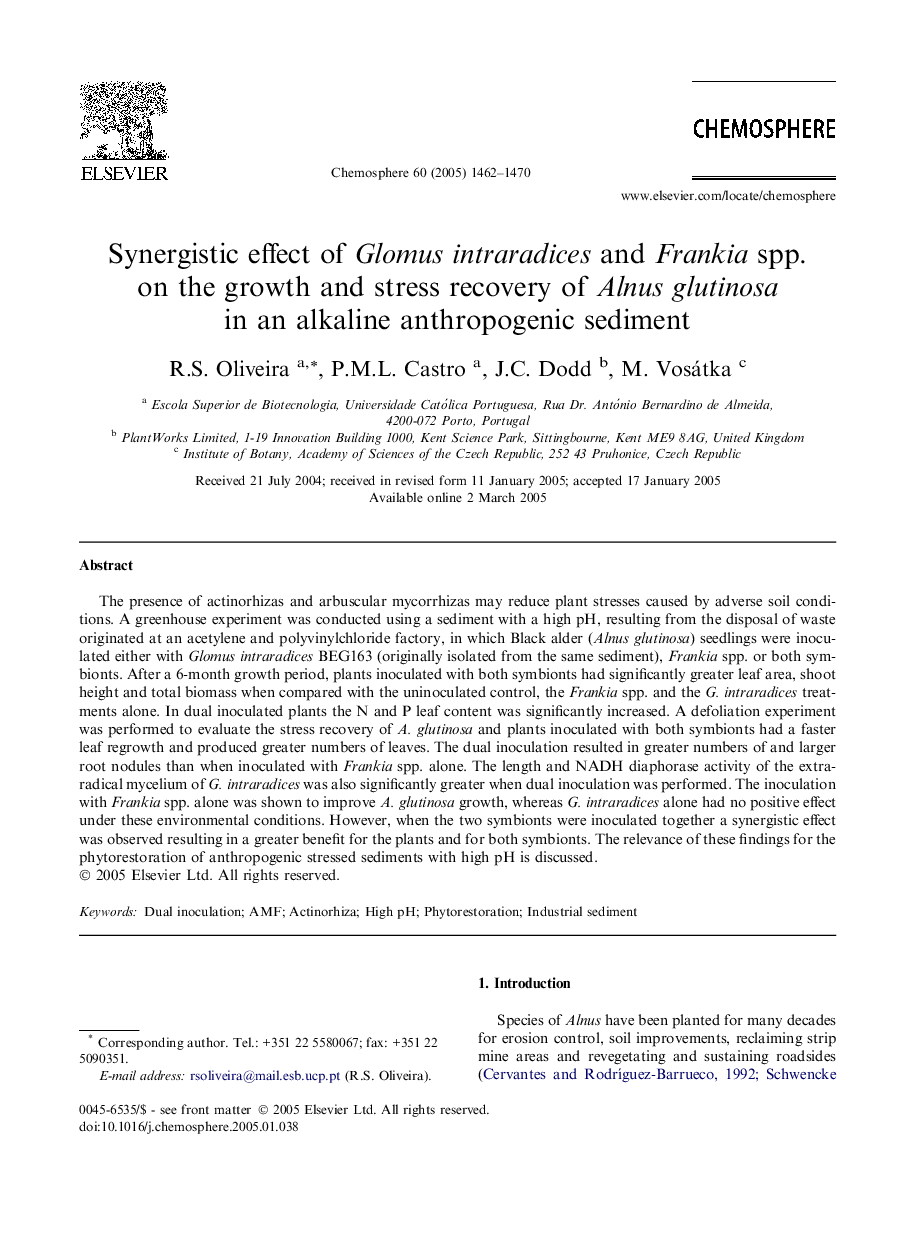| Article ID | Journal | Published Year | Pages | File Type |
|---|---|---|---|---|
| 9451239 | Chemosphere | 2005 | 9 Pages |
Abstract
The presence of actinorhizas and arbuscular mycorrhizas may reduce plant stresses caused by adverse soil conditions. A greenhouse experiment was conducted using a sediment with a high pH, resulting from the disposal of waste originated at an acetylene and polyvinylchloride factory, in which Black alder (Alnus glutinosa) seedlings were inoculated either with Glomus intraradices BEG163 (originally isolated from the same sediment), Frankia spp. or both symbionts. After a 6-month growth period, plants inoculated with both symbionts had significantly greater leaf area, shoot height and total biomass when compared with the uninoculated control, the Frankia spp. and the G. intraradices treatments alone. In dual inoculated plants the N and P leaf content was significantly increased. A defoliation experiment was performed to evaluate the stress recovery of A. glutinosa and plants inoculated with both symbionts had a faster leaf regrowth and produced greater numbers of leaves. The dual inoculation resulted in greater numbers of and larger root nodules than when inoculated with Frankia spp. alone. The length and NADH diaphorase activity of the extraradical mycelium of G. intraradices was also significantly greater when dual inoculation was performed. The inoculation with Frankia spp. alone was shown to improve A. glutinosa growth, whereas G. intraradices alone had no positive effect under these environmental conditions. However, when the two symbionts were inoculated together a synergistic effect was observed resulting in a greater benefit for the plants and for both symbionts. The relevance of these findings for the phytorestoration of anthropogenic stressed sediments with high pH is discussed.
Keywords
Related Topics
Life Sciences
Environmental Science
Environmental Chemistry
Authors
R.S. Oliveira, P.M.L. Castro, J.C. Dodd, M. Vosátka,
